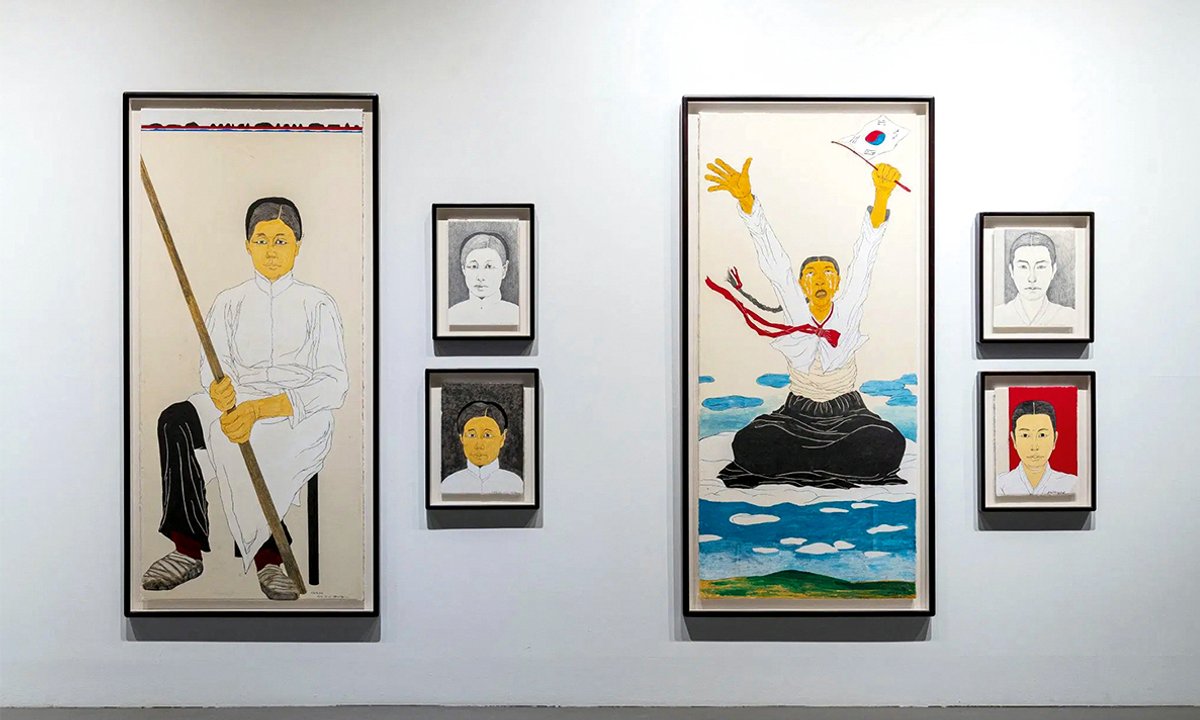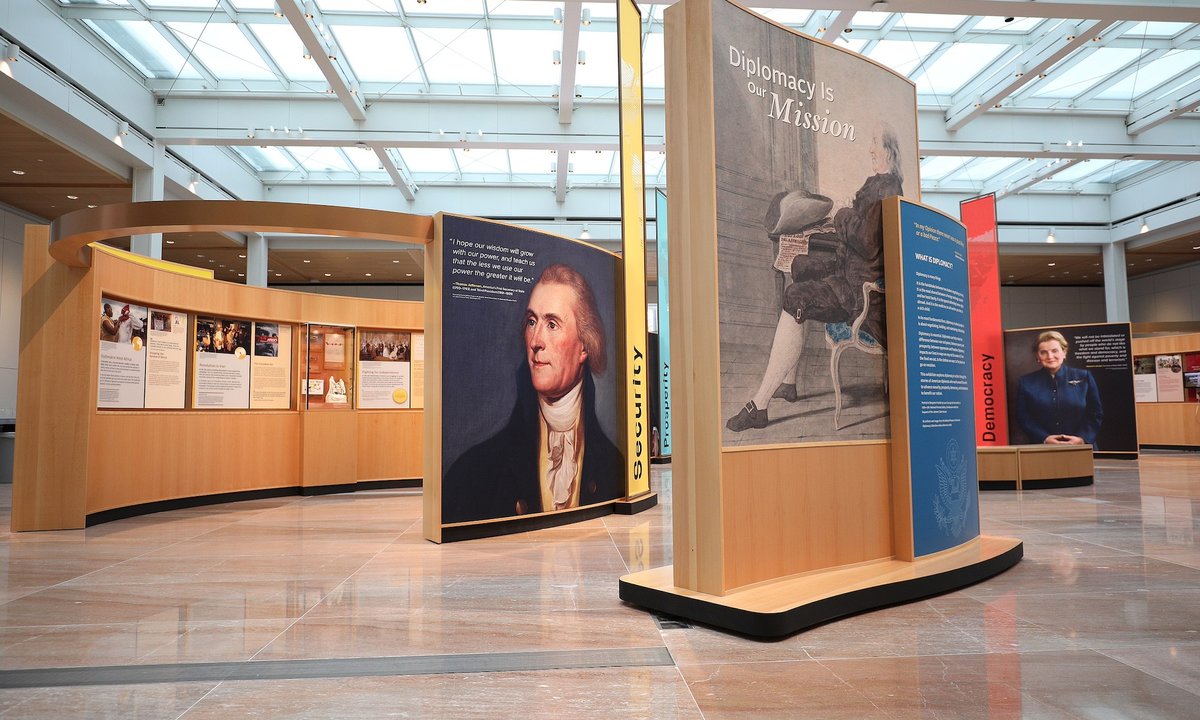From Haegue Yang’s major retrospective at London’s Hayward Gallery (until 5 January 2025) to Mire Lee’s visceral Open Wound installation in the nearby Turbine Hall at Tate Modern (until 16 March 2025) and Lee Bul’s dynamic sculptures occupying the Met’s Fifth Avenue façade (until 27 May 2025), female artists from South Korea are a powerful presence in London and New York right now. But these prominent figures are just an indicator of how, as I discovered on a recent visit, a range of women, queer and non-binary artists are radically reshaping Korea’s art scene, delving into the country’s hidden histories, challenging gender orthodoxies and pushing other conversations in exciting new directions.
The work of siren eun young jung, who I met on a studio visit, shines light on elements of Korea’s post-war life that have been buried under the gloss of 21st-century K-beauty and K-pop. As a child she witnessed the violent aftermath of the 1980 Gwangju Uprising and was introduced to women’s studies when studying painting at Ehwa Women’s University in the 1990s. “The feminist movement was developing on campus and in solidarity with environmental, queer and peace groups, I learned to listen to the voices of those excluded from history politics and art,” she told me. A later spell studying with the feminist art historian Griselda Pollock at Leeds University in the early 2000s cemented this focus.
One of jung’s most significant ongoing projects explores yeoseong gukgeuk, a form of traditional Korean theatre in which all the roles were played by women, and whose male character actors achieved a particular following, even enacting fantasy weddings with fans. Especially popular in the 1950s and early 1960s, it was subsequently sidelined by the pro-capitalist, authoritarian administration of Park Chung Hee and had all but disappeared by the 1980s. For more than 15 years jung has been working with its few surviving performers, making films, compiling archives and staging performances with contemporary transgender musicians, lesbian actors and drag kings. One of these performances was shown in a multi-channel video installation in the Korean pavilion at the 2019 Venice Biennale, and jung continues to work with Korea’s current queer performance scene and to affirm its place within the lineage of yeoseong gukgeuk.
Prevailing norms and expectations around age, beauty and femininity underpin the exuberant textile sculptures of Woo Hannah. Woo inaugurated the first Frieze Art fair in Seoul in 2023 with her giant installation The Great Ballroom, in which she used pendulous swags of ruched, pleated, puckered fabric and dangling droplet shapes to celebrate women’s breasts, motherhood, and the glory of wrinkled skin. “In my rococo ballroom everyone celebrates their youth and their oldness—I don’t want to make any hierarchies between youth and old age,” she declared at the time the work was revealed.
Today she continues to harness bodily imagery to challenge what is considered acceptable or macabre and monstrous. In her studio up in the wooded hills overlooking Seoul, Woo showed me her latest series of Bleeding sculptures, which are enormous, vivid fabric flowers that resemble female genitalia. These works, with the help of glittering clusters of appliquéd red beads, celebrate the menstrual cycle, still not a popular subject in art from Korea—or anywhere.
“I reflect on which age, according to Korean society, is ‘appropriate’ for child bearing and reproduction and how we should process our bodies as women,” says Woo. “One of my main aims is to reject binary divisions and establish a horizontal relationship with us and all beings—nature should not be in the background.”
Auntie wisdoms
Age-old female traditions—or what they call “auntie wisdoms”—dominate the activities of the Seoul-based but peripatetic Rice Brewing Sisters Club (RBSC). This shape-shifting collective was formed in 2018 by Hyemin Son, Aletheia Hyun-Jin Shin and Soyoon Ryu, who continue to be united by a shared interest in what they describe as “social fermentation”. This fluid term expands the notion of fermentation beyond biochemical brewing into a wide range of communal activities and conceptual art.
From early projects drawing on ancient skills—often held by women—related to making fermented food and drinks, their work has now expanded into writing, crop cultivation bio-lab experiments and oral history documentation. As well as residencies in cities including Seoul, Anseong and Busan, the RBSC also collaborate with brewers, farmers, storytellers, artists and writers as well as community organisations both within and outside South Korea.
Speaking on the central theme of their work, when we met on a Seoul warehouse rooftop, they said: “Fermentation happens in every facet of the environment, in the air, the land and also in the ocean with marine micro-organisms.” To this end RBSC have recently been working with a sea algae called agar-agar, which has many uses, grows along the shores of South Korea and Japan and is traditionally hand harvested by women divers.
At the 2022 Busan Biennial, their sculptural installation was made from the agar agar growing around the neighbouring coastline. It was shaped by a deep engagement with the rituals and spiritual beliefs of the dwindling local population of local haenyeo, female divers working on the South Korean island of Jeju.

Rice Brewing Sisters Club, Sea Plants, Bare Hands, Entangled Gaetbawi (2022) at the 2022 Busan Biennale
© Busan Biennale Organizing Committee All rights reserved
Realising agar-agar’s potential as a sustainable bio-substitute for plastic, RBSC have now set up a commercial arm which aims to support their endeavours as well as those of the divers through the sale of low-priced agar-agar goods.
Feminism to the fore
There was also a powerful female presence in the 2024 Busan Biennale (which closed in October), curated by Vera Mey and Philippe Pirotte. At Busan’s Museum of Contemporary Art, the main venue, one of the first rooms was dominated by a parade of more than 57 dramatic portraits of female Korean independence activists by Yun Suknam, many made using the technique of Chaesaekwa, or Korean polychrome painting. A pioneer of Korean feminist art, 85-year-old Yun’s Women of Resistance series foregrounds a multi-generational group of female heroes—nurses, teachers, scholars and firefighters—who have long been overlooked and eclipsed by their male counterparts.
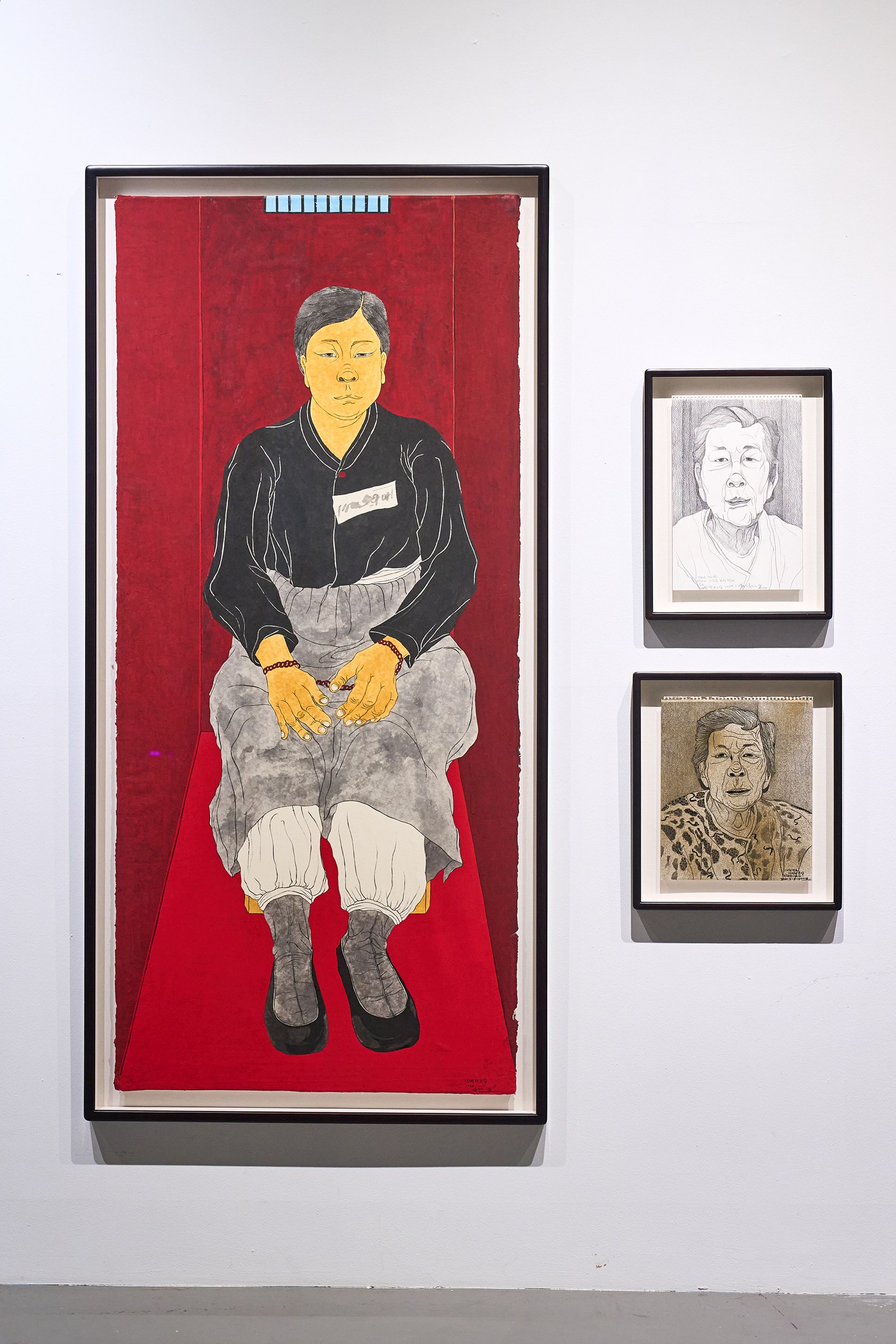
An installation view of Yun Suknam’s Women of Resistance series (2020-23), shown at the Busan Biennale
Courtesy the artist and Hakgojae Gallery
The title of this year’s Busan Biennale was Seeing in the Dark, a theme framed by the curators as a celebration of opacity and the marginal, which organisers say offers “an embracing alternative” to societal norms. This notion was developed through the dual concepts of “pirate enlightenment”, revolving around early so-called pirate utopias that offered egalitarian, gender inclusive refuges for those operating outside society—and “Buddhist enlightenment”, emphasising a selfless, nationless, possessionless departure from secular life.
Pirate paradise
Among the many Busan Biennale artists viewing these ideas from a feminist perspective was Dina Nomena Andriarimanjaka from Madagascar, who, using collaged and annotated archive images, letters, embroidered textiles and tapestries, delves into the little-known stories of indigenous Malagasy queens and princesses. These female sovereigns allegedly collaborated with sailors, pirates and outlaws to form Libertalia, a prototype pirate utopia where people of all colours, creeds and beliefs—as well as women—could live free of scrutiny.
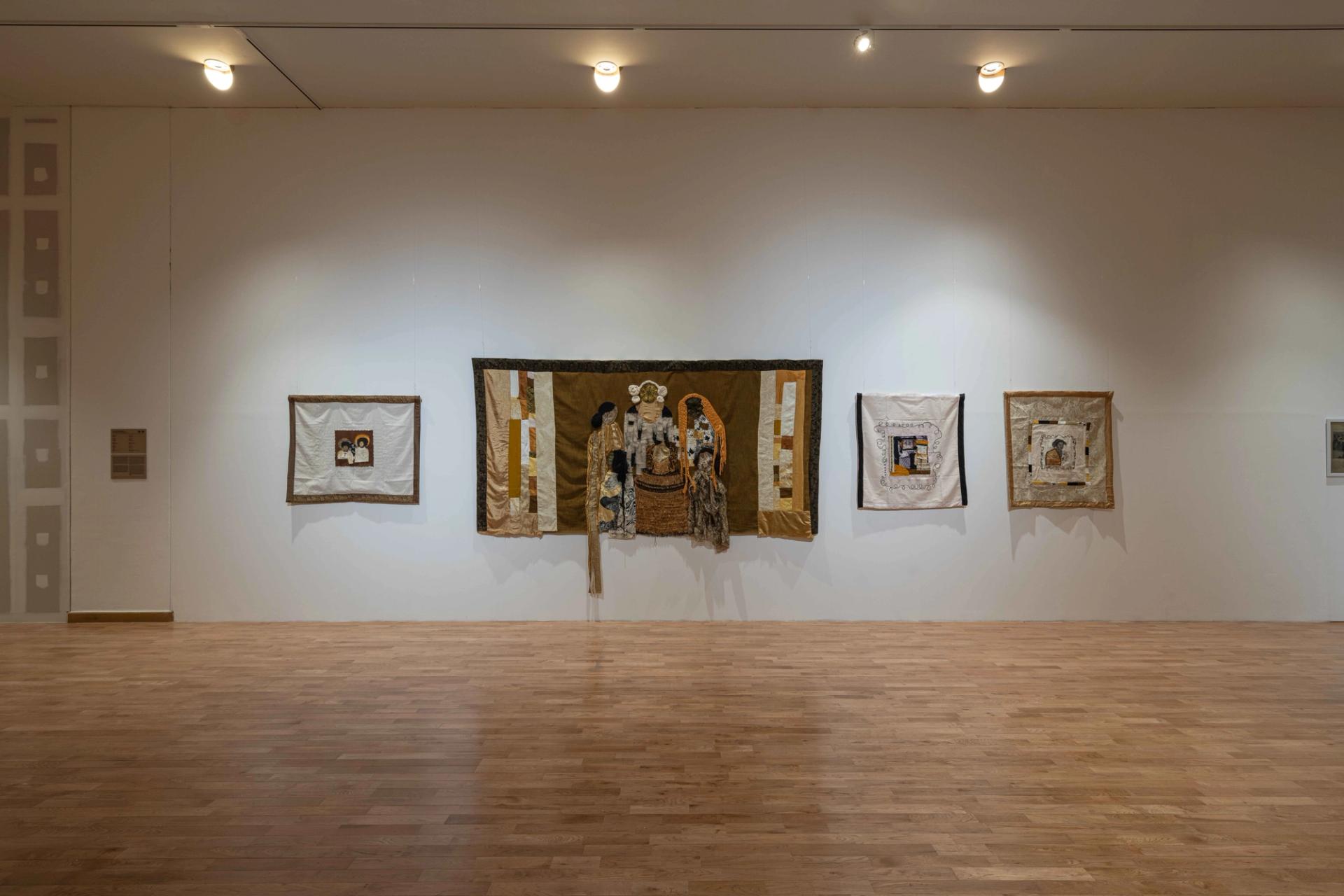
Dina Nomena Andriarimanjaka’s work at the Busan Biennale explores the little-known stories of indigenous Malagasy queens and princesses
© Busan Biennale Organizing Committee All rights reserved
Buddhism’s male dominance was addressed at the event in the humorous paintings of the Korean artist Bang Jeong A, which give subversively female form to male Arhat sculptures—works depicting a person who has reached enlightenment. Instead of exuding beautific calm, Bang’s Arhat women in swimsuits offer a more realistic image of everyday life as they bob on a rough sea struggling to keep afloat.
The rarely discussed misogyny in Buddhism was also explored by the Chinese-born, London-based artist Han Mengyun in Night Sutra. This three-channel video embedded in a Dong textile installation alludes both to the format of Buddhist manuscript as well as the shape of an open womb. In it, women from across the world, and a range of sculptural backgrounds, tell stories of motherhood, exile, diaspora and trauma.
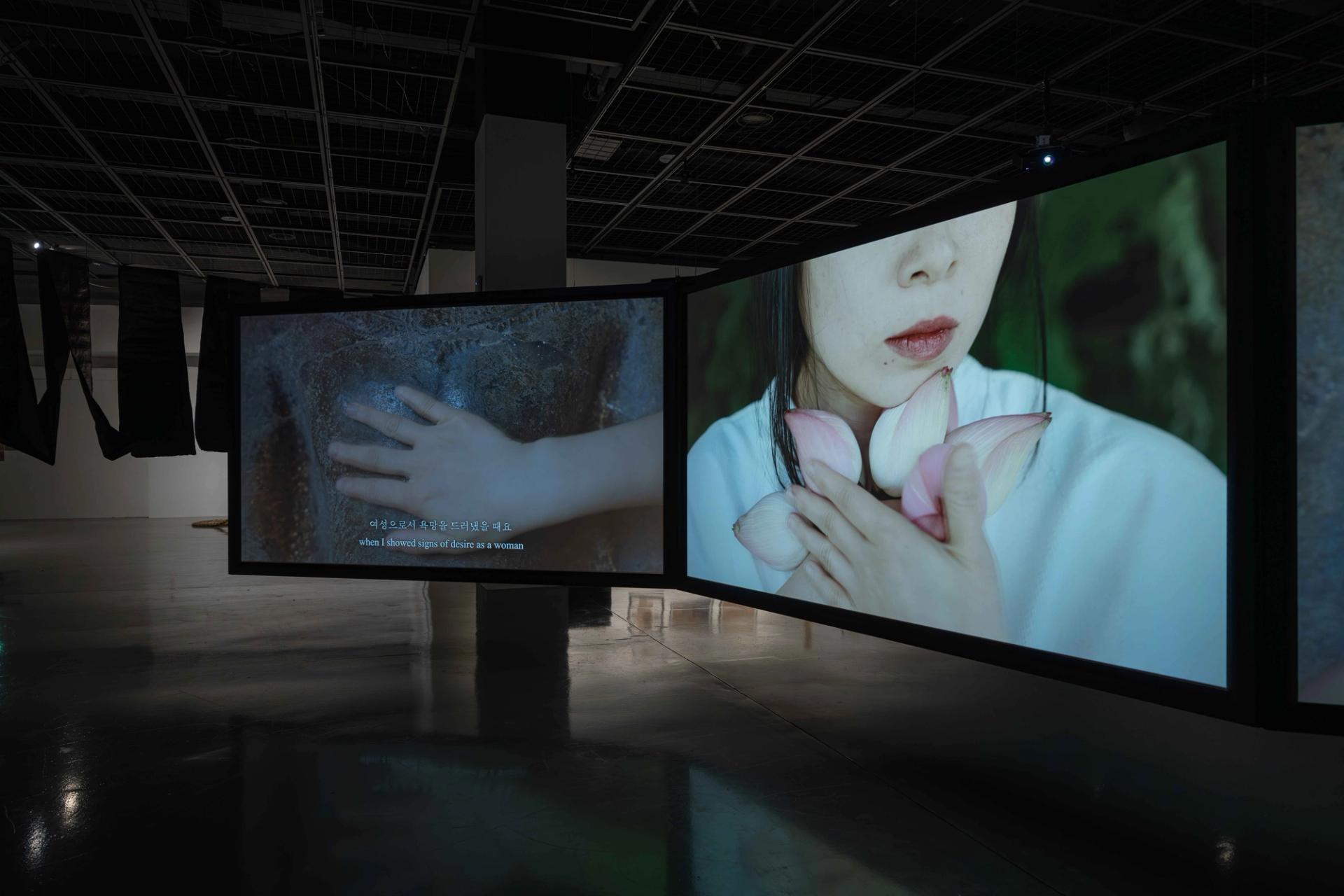
An installation view of Han Mengyun, Night Sutra (2024)
© Busan Biennale Organizing Committee All rights reserved
Whether in Busan, Seoul or out in the wider art world, it seems the patriarchy is receiving a new, satisfactory pounding.


